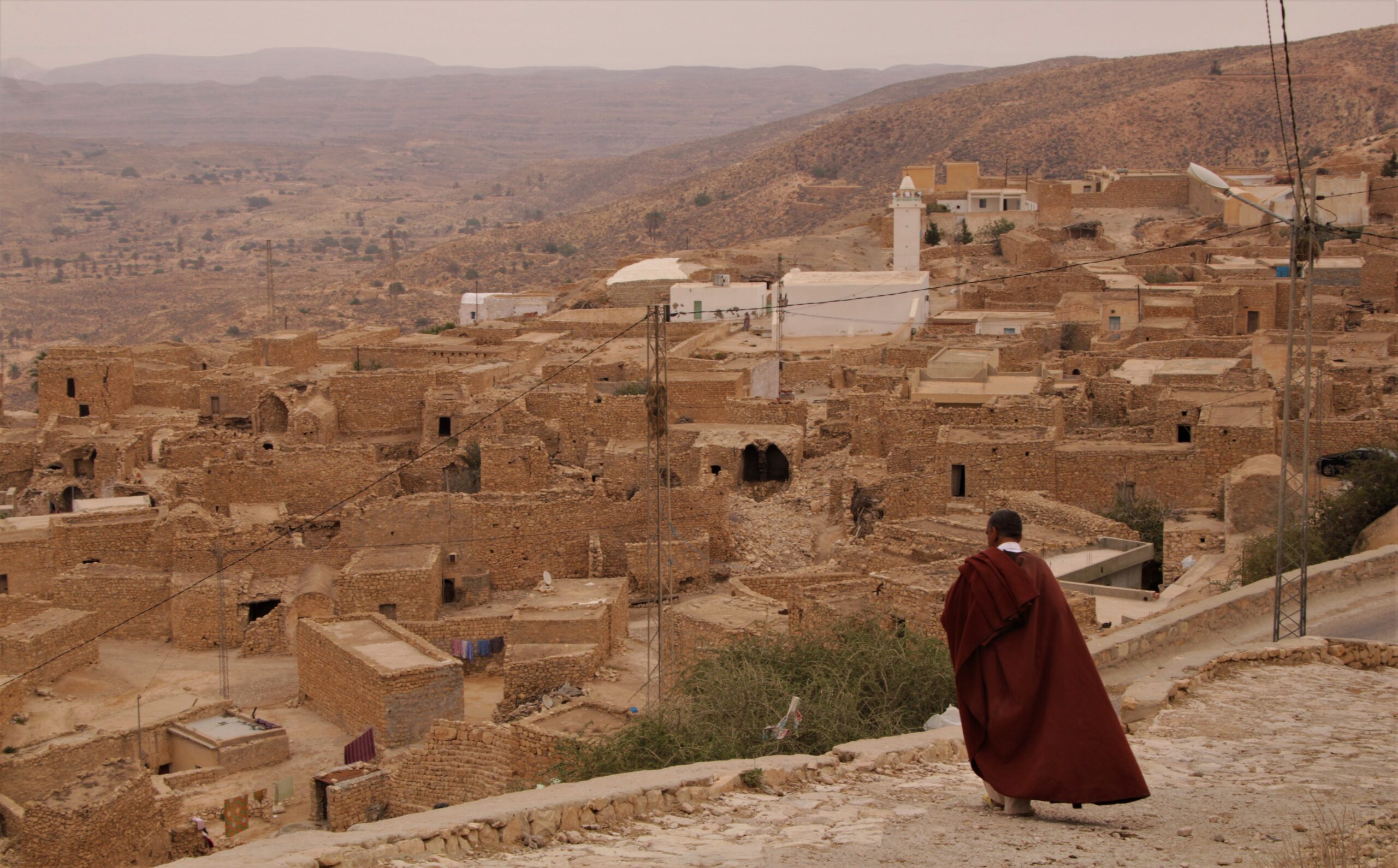In southeast Tunisia lies a landscape marriage between generations of subsistence human activity and the desert ecosystem; as artificial as the wine and olive regions of Tuscany, yet seemingly just as natural.
I looked down into desert valleys shrouded in fog before entering an alien stack of mailbox-shaped silos built of rock and mud called Ksar Ouled Soltane.
There at the entrance, I was greeted by three desert men stoking a fire and eating a breakfast of baguette and olive oil. They were getting ready to repair the silos of the strange beehive-like building. They told me they preferred their old town to the new ones. “It’s better to be in nature”.
That fine rural gentleman’s opinion was to be like a theme for the rest of the journey through the Dahar, a cultural region of rocky foothills and desert valleys that has offered a uniquely bountiful life for the Amazigh, or Berber people of modern-day Tunisia, and visiting Arabs for thousands of years.
The break in monotonous desert which surrounds the Dahar on three sides allows for not only the cultivation of the ubiquitous date palm, but also olives, as well as fodder for goats and sheep, and even desert grains, all of which have sustained large populations of the semi-nomadic Amazigh since Roman times.
Their citadels, sometimes hundreds of years old, crown hills in piles of crumbling buildings, and along canyon shelves are seen doorways cut into the stone which tell a tale of who-knows-how-many generations of passing feet sheltering from desert sun and sand blasts.
All this can be divined from the road, but to experience the Dahar properly one has to put their feet on the land.

A land of change and constants
Where there is food, there is often progress, and the semi-permanence of the food supply relative to the surrounding area meant that all types of societal progress could occur in the Dahar over the years. From olive cultivation during the Roman Empire, all the way to the practices of paleontology and modern film-making, the region is a rich tapestry of human activity.
I, like many travelers, was drawn by one of the chief curiosities of the region—the ghorfa. The aforementioned mailbox-shaped grain silos were a pioneering construction method of the Berber who needed to store grain from bumper years for leaner times. Yet this was the Maghreb—a place famous for banditry.
As a result, many of these silos morphed into compounds with gates, high walls, and sometimes moats, and began to take on the name Ksour (plural). Always located on hilltops to protect them from pests, thieves, and invaders, a Ksar (singular) would sometimes grow still further into a hillfort, where families could muster in times of emergency.
Dozens of these bizarre structures can be found in varying degrees of preservation throughout the area.
Encircling the gullies and valleys at their feet, countless terrace farms, dams, and irrigation channels carve the landscape into one that is unmistakably human despite how much nature is left intact.
Although many of these rural practices have survived through the ages and continue on today, change has been a constant.
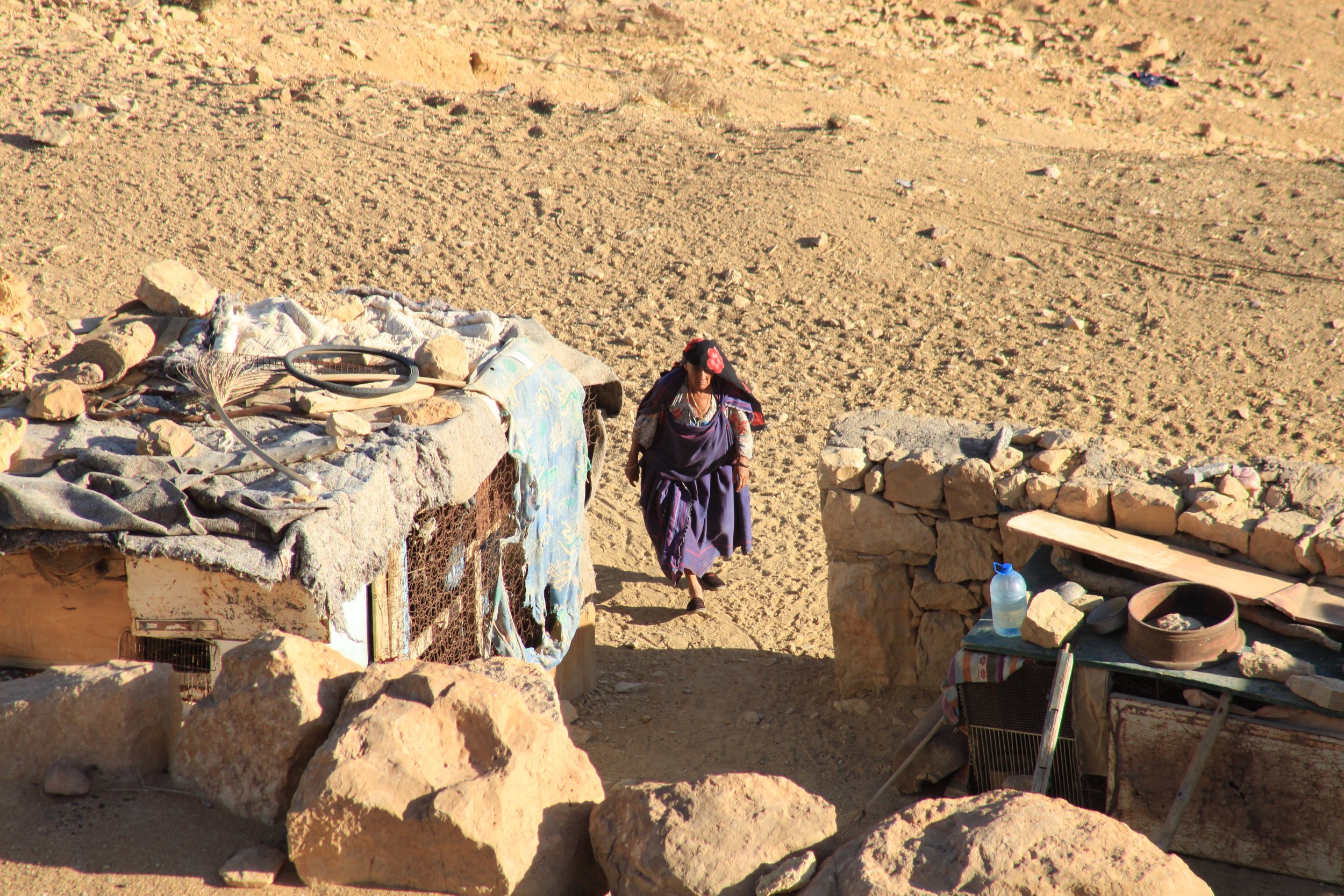
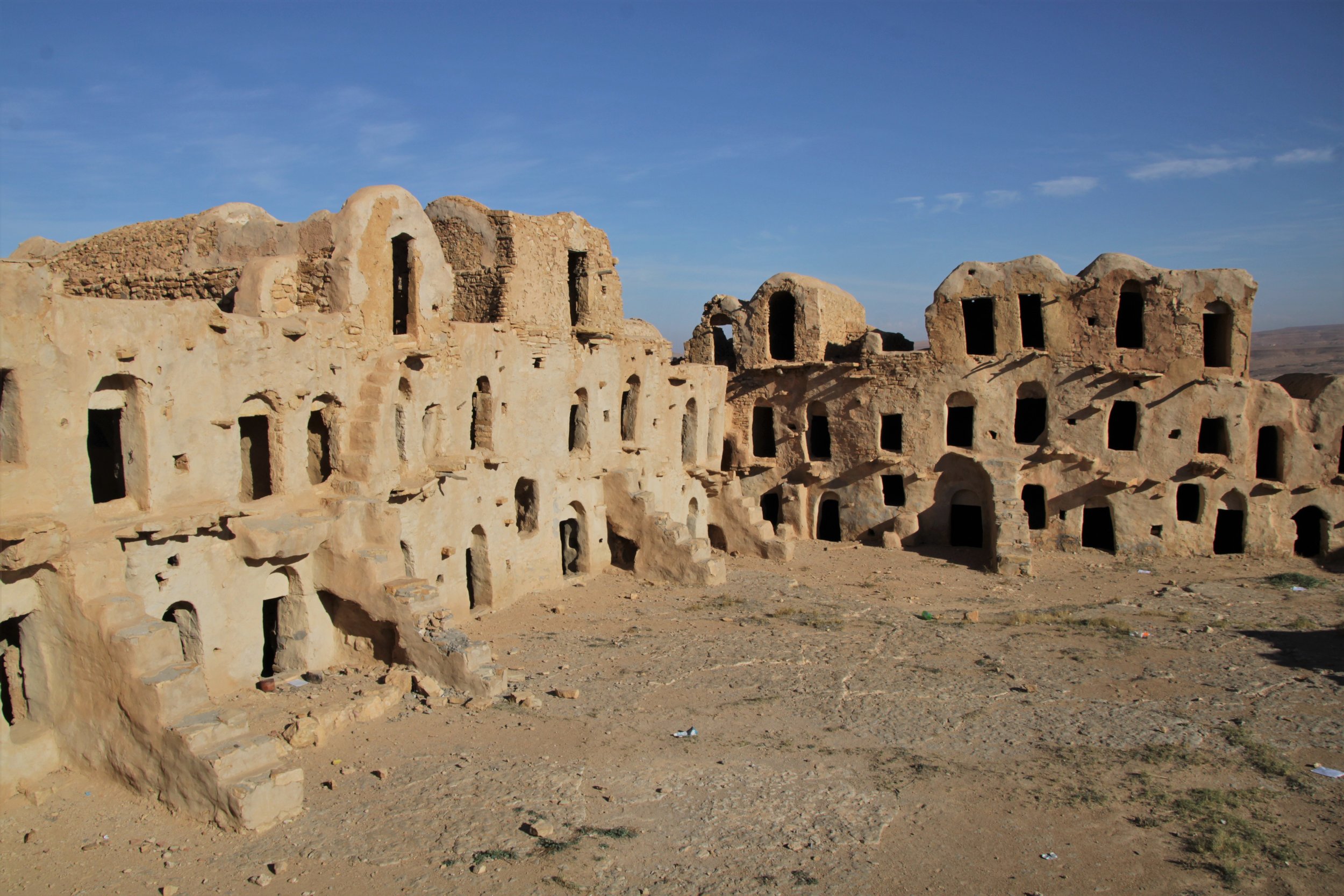
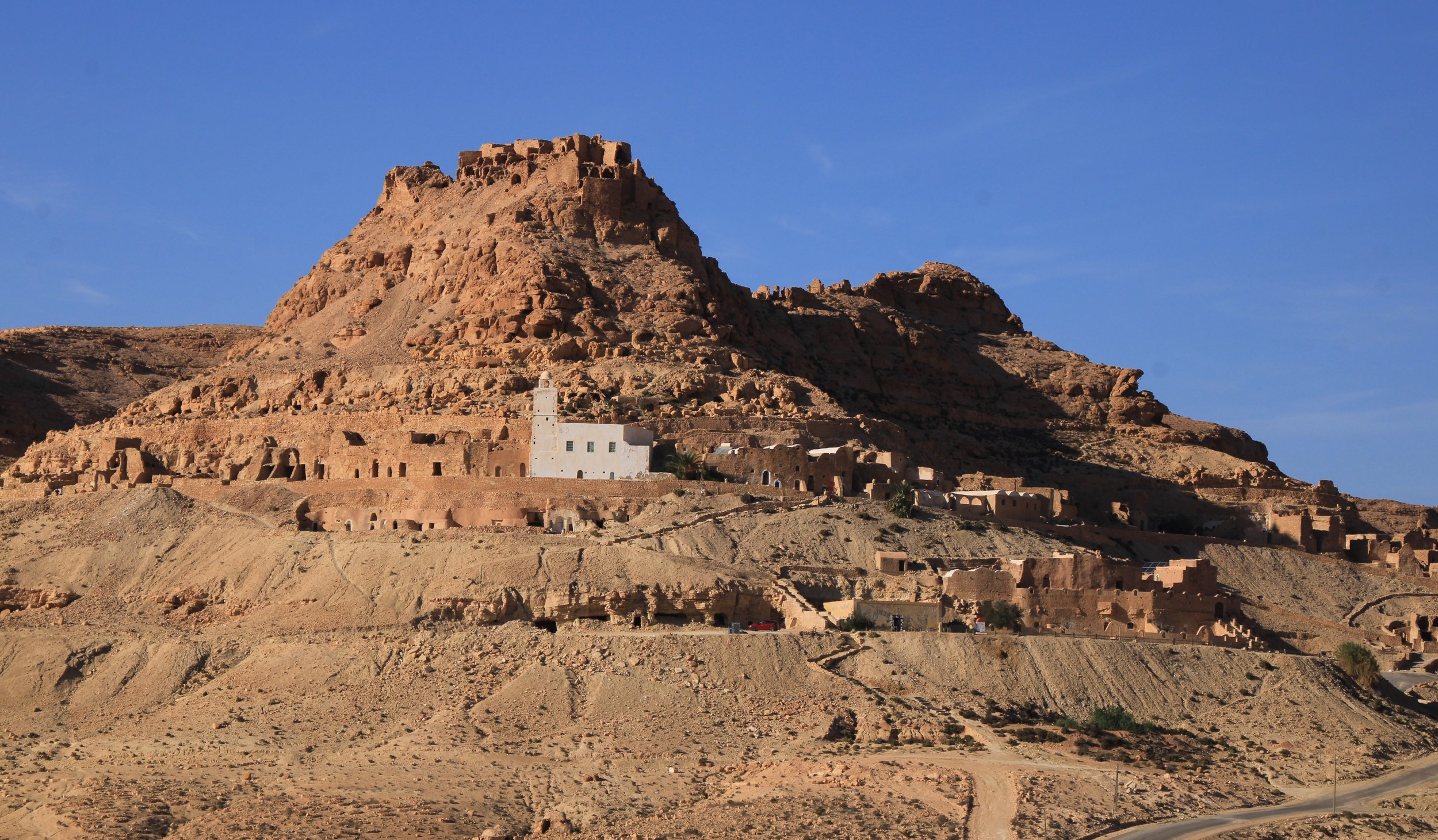
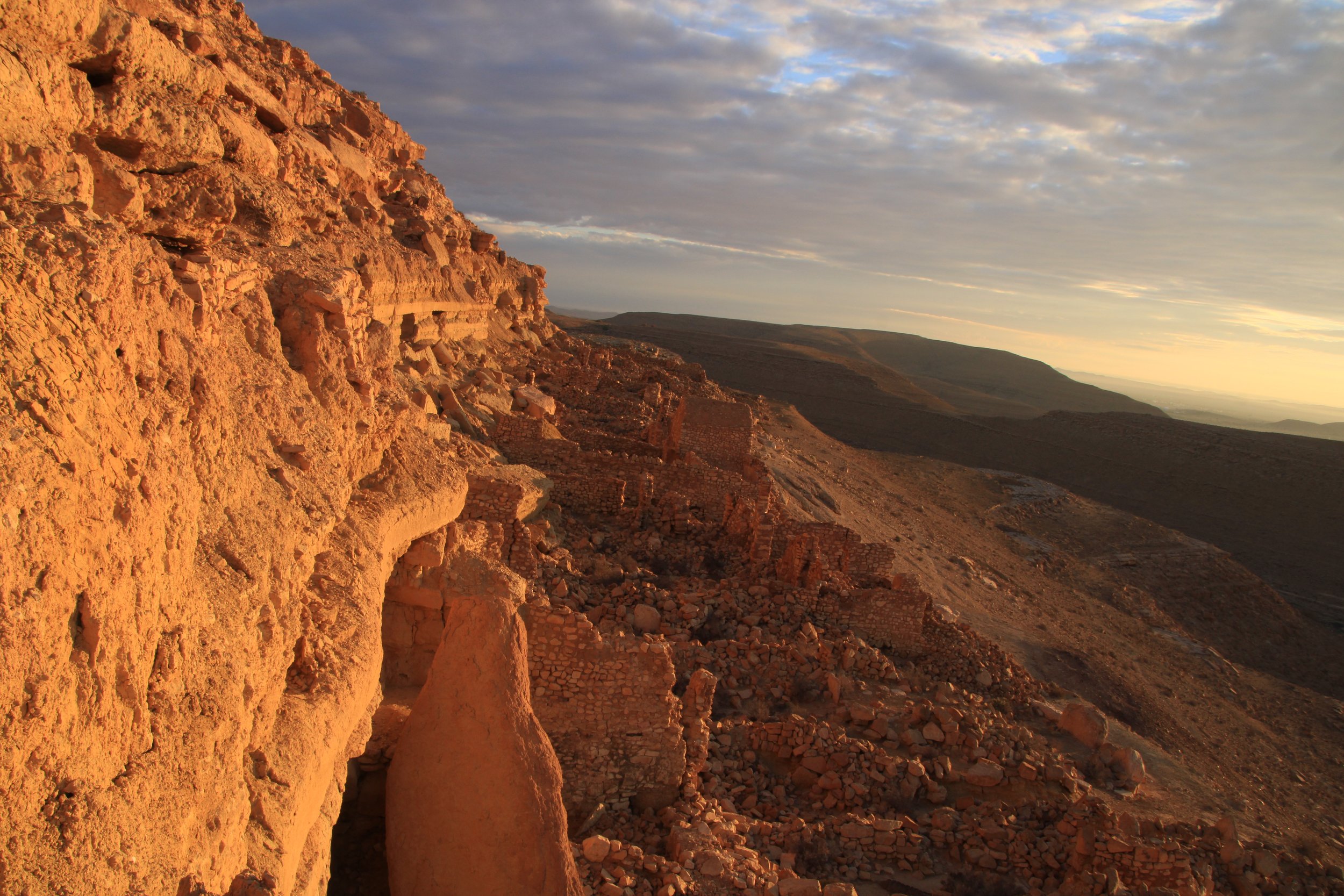
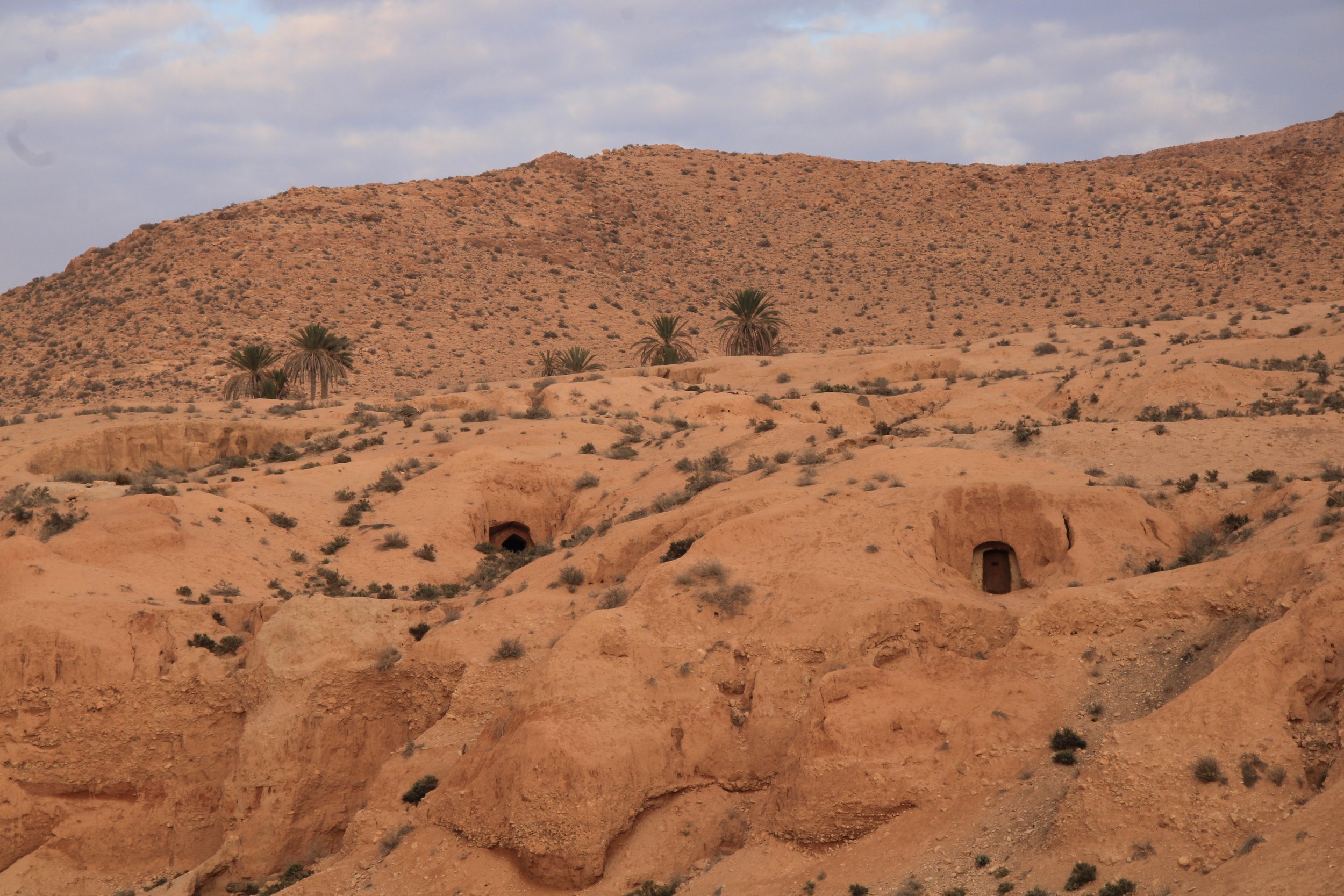
“The troglodyte villages of Dahar date from the 13th or 14th century,” says Leila, owner of La Cuesta guesthouse, and a retired geography professor. “Currently the population of these villages has greatly decreased since independence. In the 1970s the state built new villages nearby with schools. Now there is Old Chenini and New Chenini, Old Douirat and New Douirat for example”.
“Many inhabitants of these villages have emigrated to work in large cities such as Tunis and Sfax and also abroad. Their sons and grandsons are all over the world and often come back home during the holidays,” she adds.
Without doubt, the smaller villages have been very depopulated, but as the country folk flocked to the newly-built towns looking for better-paying work and a brighter future, they found there were not enough jobs waiting for them. They were stuck between the rhythm of their traditional cultures and the lure of a then-unreachable future. The new villages became something like shanty towns, and are still very poor today.
Yet more change came, and more after that, such that a beautiful equilibrium can be found on the landscape as ancient and modern meld together, slowly bringing wealth to the poor region.
Ancient and modern
In places where tourists and travelers come, old towns are out-populating new towns. New Chenini is a pit stop—Old Chenini is fast becoming a destination in North Africa, with a bus depot connecting this hilltop citadel to the nearby island resort town of Djerba.
New Douiret is a collection of cement boxes with corrugated-iron roofs, while Old Douiret, another fortified hilltop, is slowly transforming into an oasis of hospitality businesses, with rustic restaurants, guesthouses, and guided hikes.
Dkhilet Toujane is another new town that will likely be outgrown by Old Toujane. The latter is a center of artisanal craft, and USAID supports the artisans there.
In Matmatat, the new town simply grew around the old town. The Berbers here are also all too happy to take advantage of another modern development—the use of their region as a filming location for Star Wars. Luke Skywalker’s uncle’s house has now been turned into a hotel, and for a €0.30 tip, one can walk around and take pictures.
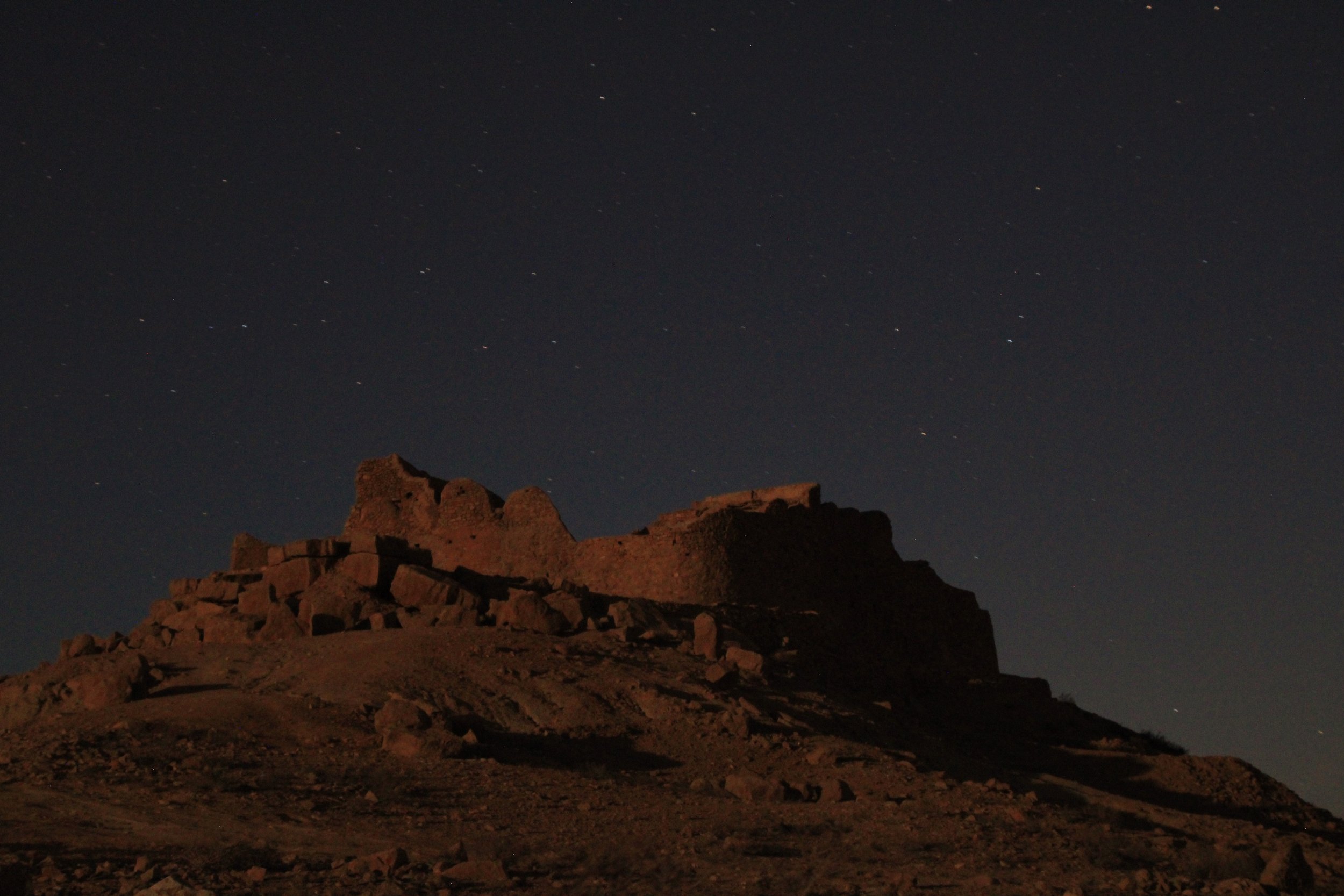
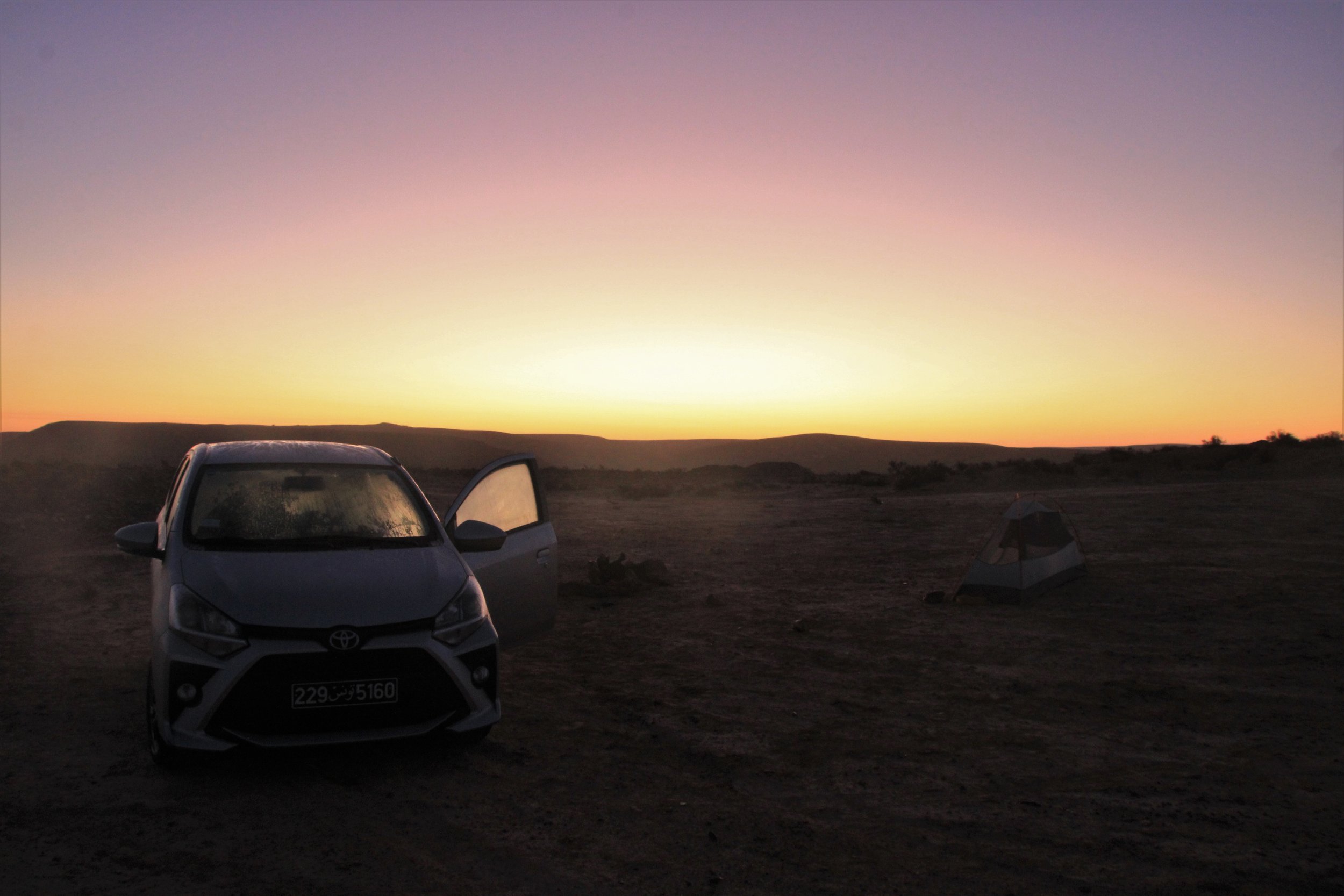
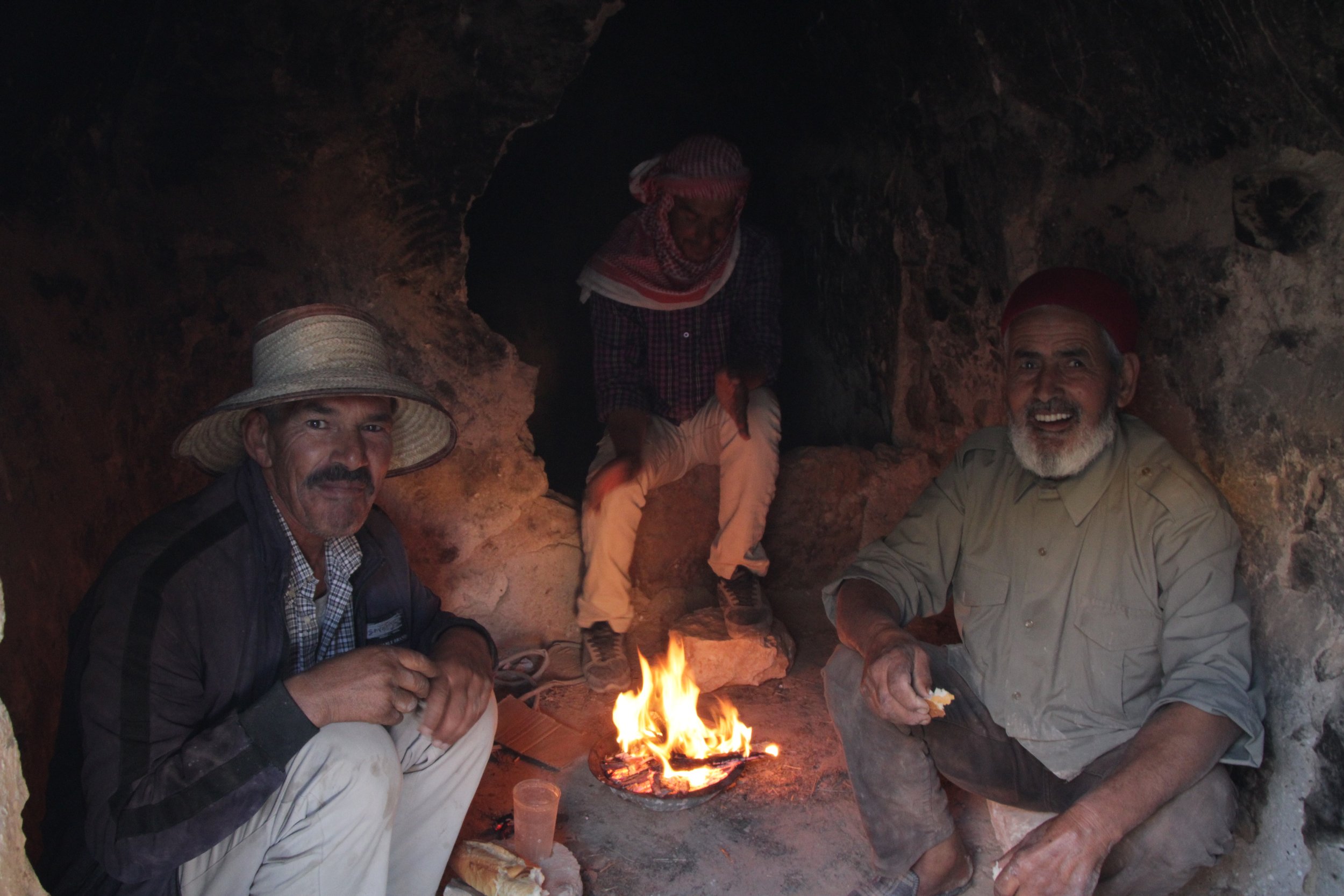


In all these places, people were beginning to feel like the men who I met repairing their granary. As ubiquitous as rural poverty is in the developing world, there were nevertheless people who still preferred their ancestral home and way of life to the bustling pseudo-European streets of Tunis.
On the second day, I picked up a hitchhiking microelectronics engineer who was selling computer chips to companies in the region. He had just finished an overnight backpacking trip with his friends. They camped high in the mountains, as they often did on their weekends to get away from the city.
The following day I visited a family of olive oil producers. They lived in what could only be described as an elegant set of burrows—6 in total, which all branched off from a central paved courtyard of chalky white stone and were dug into the soft rock of a hillside. The hospitality of the Berbers is legendary, and even with my caveman-level French, I was welcomed inside their home—a total stranger.
That night I pulled inside a palm grove, gathered together some of the dead fronds for a fire, and watched the stars appear. The band of the Milky Way glimmered into view as the mountains shaded the rising of the moon. Wolves howled in the distance—red ones, and totally harmless to humans. The human-changed landscape began to feel very remote and wild in the darkness of the night.
The next day, began much like the previous one had begun—at daybreak, with the returning warmth heralding another day of adventure; of walking around ruins unattended, of meeting utterly hospitable people, and taking views of what truly seemed a counterpart to Italy’s Chianti, but in the Sahara. WaL

PICTURED ABOVE: A Berber man passes stoically down the streets of Toujane. © Andrew Corbley.
If you think the stories you’ve just read were worth a few dollars, consider donating here to our modest $500-a-year administration costs.
